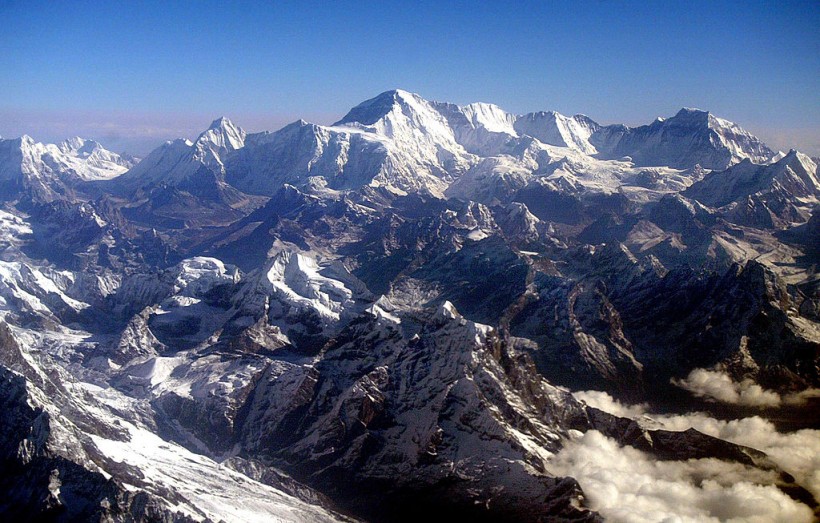A new study reports that the success rates for mountaineers attempting to reach the Mount Everest summit have doubled in the last thirty years. Meanwhile, death rates remained relatively steady over the same period.
Researchers from the University of Washington (UW) and the University of California, Davis (UCDavis) made the study on the world's tallest peak. Their reports are published in the open-access journal PLOS ONE on Wednesday, August 26.

EVEREST HIMALAYAN RANGE, NEPAL - MAY 18: Mount Everest is shown at approximately 8,850-meter (29,035-foot) May 18, 2003, in Nepal. The world's tallest mountain is (back-center) surrounded by Nuptse (L) 8848m and Lhotse, 8576m (R).
Identifying Mount Everest Challengers
The collaborative work between UW and UCDavis primarily investigated the effect of several factors—age, sex, experience, crowding—on success and death rates during the spring climbing season.
"Mount Everest is still a very dangerous mountain, and climbing it will never become a walk in the park because it's way above the limits of what most people can do," said Raymond Huey, lead author of the study and a professor of biology at UW. Huey noted that reported statistics regarding Mount Everest's risks were inaccurate, leading them to analyze climbing data in order to achieve accurate information. They were looking to guide climbers in making informed decisions before attempting the 29, 029-foot peak.
RELATED: A Mount Everest Expedition Address Climate Change in Mountain Regions
The researchers reviewed both success and death rates for those identified as the first-time climbers who were able to secure a permit to climb Mount Everest from 2006 to 2019. They used the new data in reference to their previous study, where they analyzed similar data and used the same statistical methods for climbing attempts from 1990 to 2005.
Effects of Various Factors To Summit Success and Death
In the first fifteen years of the study, there were 2,211 first-time climbers on Everest. Since 2005, researchers were able to identify 3,620 people who attempted the summit. Additionally, authors of the study noted the presence of paid permits and excluded people with other activities such as support staff, high-altitude porters, and assistants are locally known as "Sherpas," noting that these people were not attempting to summit, or that records for them were incomplete. Also, years, where the spring climbing season was canceled due to natural disasters, were also excluded in the study.
RELATED: Aid Arrives in Nepal: Who Was First on the Scene
Furthermore, it showed that the summit success rate essentially doubled—from about one-third in the 1990-2005 period to two-thirds in 2006-2019. In both halves of the study, the death rate remained close to one percent. Researchers collapsed death group assignments into groups, to further isolate factors contributing to each. They separated those from (1) illnesses such as frostbite and exhaustion, (2) falling from cliffs and crevasses, (3) objective hazards such as avalanches or ice collapses, and (4) others for unexplained circumstances.
In terms of age, the 60-year-olds of the 2006-2019 bracket exhibit nearly the same success rates of 40 percent as the 40-year-olds of the 1990-2005 period. Location-wise, most deaths in Mount Everest were found on the higher parts of the mountain, with the majority of these deaths occurring during the descent instead of the ascent. In the earlier dataset, 46.9 percent of the deaths occurred going down from the peak. It has increased to 61.7 percent in the recent study.
Gender-wise, both men and women exhibit similar success and death rates during commercial spring climbs over the three-decade period. Furthermore, women climbers were noted in the study as a small but increasing proportion of Everest mountaineers.
Check out more news information about Mount Everest only on Science Times.














